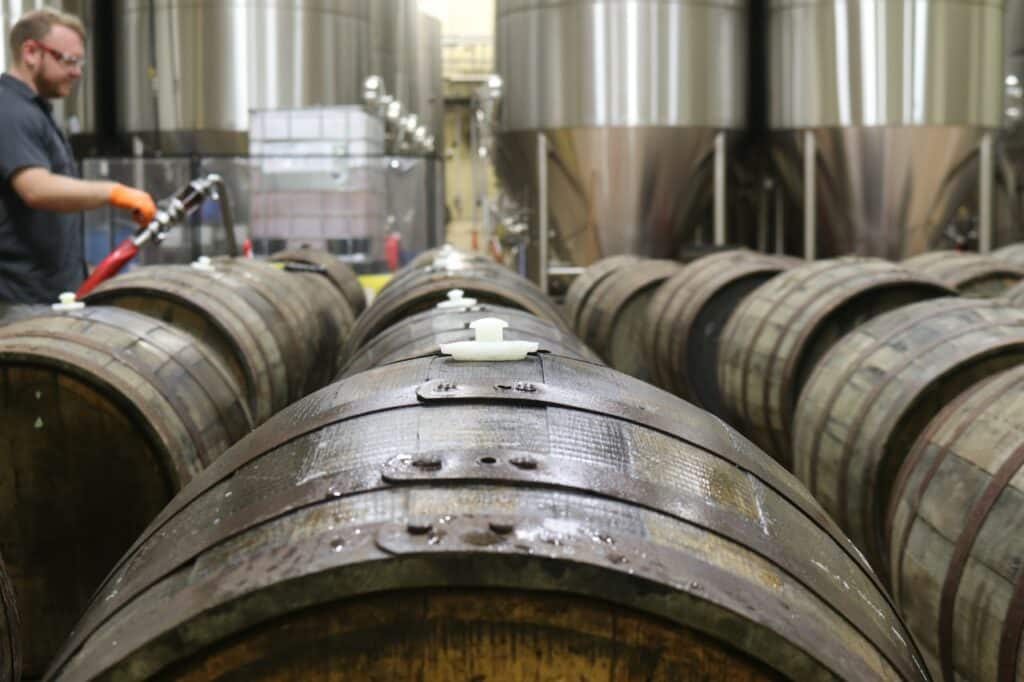The global wine industry is an impressive institution spanning across the world, estimated to be valued at USD 513 billion and expected to cross USD 846 billion within the next ten years. According to market insights, the overall industry sales are projected to rise at a CAGR of over 5% during this period.
Despite its size, the wine industry accounts for only 2-4% of the overall alcohol and beverages industry. Of this, the market share of the table wine segment is the largest at about 80%, while sparkling wines and dessert wines make up the rest 20%.
Wine industry size by major markets
The global wine industry can be divided into five regions: Europe, North America, Latin America, Asia-Pacific, and the Middle East & Africa (MEA). Europe and North America are traditionally the biggest markets, but the emerging Asia-Pacific wine market accounts for a surge in demand across the industry. Its growth trajectory is indicative of an impressive 8% CAGR over the current decade. These countries are investing heavily in their profit-making liquor industry, fuelling its growth. For example, China’s wine market is set to expand to a whopping USD 72 billion in 2026 from USD 42 billion in 2021. China, alongside France and USA, is now one of the largest aggregate wine markets.
Consumer demand is North America is evolving and there is an increasing market for a variety of flavours, accounting for a major revenue share in the global wine industry. High spending capacity of consumers and increasing production capacity of manufacturers support the growth of their domestic market.
Europe is still the biggest wine market, with about 45% market share in the global wine industry, thanks to the largest and richest vineyards in the industry. Country-wise, the most established wine markets in the world are in Europe; Italy, France, and Portugal have the highest per capita wine consumption at over 35 litres per person per year. In fact, Europe is the world’s wine consumption centre with 58% claim of the global consumption volume.
There is a strong presence of European brands across the UK since production here is much lower than consumption. The country is one of the biggest wine importers. But key players are experimenting with production methods and developing new flavours and categories of wine to cater to the domestic demand. The UK wine industry’s projected CAGR is higher than 5.5% for the next few years.
Factors that influence the industry size
The current size of the wine industry and its growth is chiefly fuelled by the rising consumption of wine across age groups and regions. In this, there are some key highlights:
- Millennials are exhibiting a growing preference for wine-drinking and allied experiences.
- Sparkling wine consumption is increasing among all age groups, boosting champagne’s stellar market performance in recent years.
- There is a growing urban inclination for new flavours and exotic wines like Italian Franciacorta and Greek Assyrtiko
Much of this is driven by the rising consumer socialisation with wines and other liquors. Acceptance of social and recreational liquor consumption, higher spending capacity of consumers, spreading industry awareness and access, and increase in experiential marketing like wine tasting and wine tourism are all factors that have contributed to the growth of the global wine industry.
The role of technology in the wine industry is another key catalyst in its growth. The increased adoption and use of social media, for example, have contributed to a surge in the preference and consumption of wine among millennials. After all, today’s biggest consumer segment is tech-savvy and best captured through the digital medium.
The COVID-19 pandemic further enabled the digitization of the wine industry. The lockdown changed the way people bought and experienced wine. There was a 167% rise in online alcohol sales in the USA and white wine experienced a 22% rise in consumption. The off-trade sector gained over 85% of the market share during this period.
These are big numbers, but the upward trend doesn’t end here. Today, major players in the market are investing in product development and innovation, striking new alliances and partnerships, and elevating their winemaking standards by adopting sustainable measures like box packaging and biodynamic farming. The outlook on the global wine industry continues to be positive, and its size and scale remain steady.







